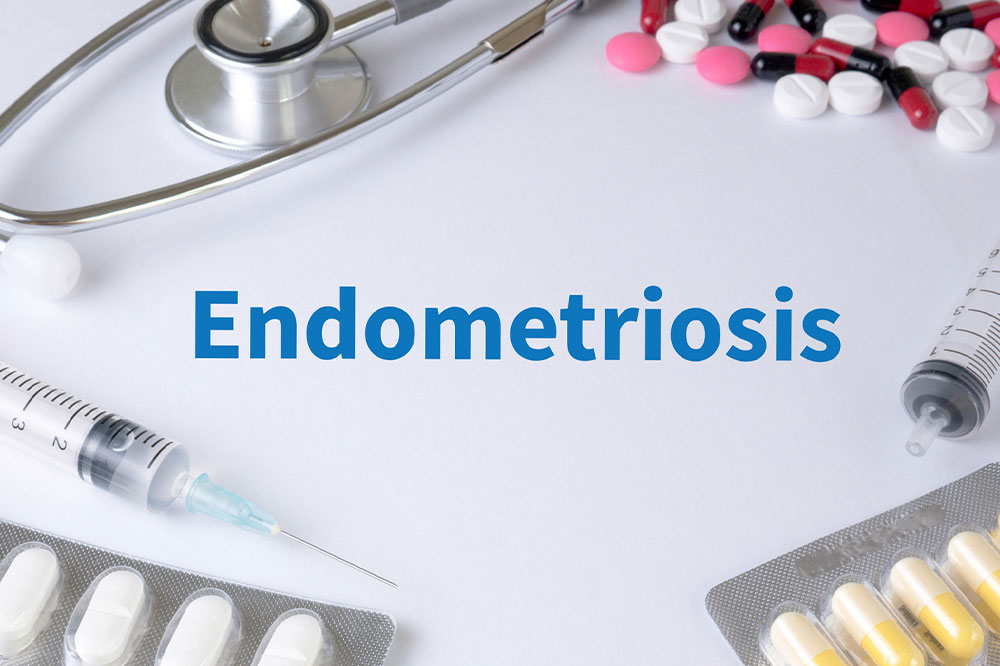Endometriosis – Symptoms and natural remedies

Endometriosis is a painful disorder wherein tissue similar to the endometrial lining begins to grow outside the uterus. This tissue commonly grows in the ovaries, fallopian tubes, and the tissue lining the pelvis. However, in rare cases, endometrial-like tissue is found beyond the location of the pelvic organs. Moreover, in endometriosis, the endometrial-like tissue thickens, breaks down, and bleeds every menstrual cycle but has no exit from the body, leading to complications and pain.
Symptoms of endometriosis
One of the primary symptoms of endometriosis is pelvic pain which is often associated with the menstrual cycle. Although most people experience cramping during their menstrual period, people with endometriosis describe their pain as far worse. Some of the other symptoms experienced by the patients include:
Excessive bleeding
Painful periods
Pain with bowel movements and urine
Pain during intercourse
In addition to the above, patients with endometriosis may experience other symptoms, such as fatigue, constipation, diarrhea, nausea, and bloating during the menstrual period.
Further, patients should not consider the intensity of pain as a reliable indicator of the condition. Some patients may have mild endometriosis with severe pain, while others may have advanced endometriosis with either little or no pain.
Managing endometriosis – Remedies for pain and other symptoms
Endometriosis is a medical condition that does not have any cure. However, certain remedies can be employed to provide relief from pain and other associated symptoms.
Heat
Heat is one of the best ways to relieve endometriosis pain. In most cases, heat relaxes the pelvic muscles and reduces pain and cramping. Hence, one can try taking a warm bath, using heating pads, and even hot water bottles to manage the pain and other related symptoms.
Turmeric
Turmeric has long been known for its anti-inflammatory properties. So, one can also use it to combat endometriosis pain and other symptoms. Furthermore, research states that curcumin, a compound often found in turmeric, may reduce endometriosis pain. Hence it’s suggested to drink turmeric tea using either the root or turmeric tea bags.
Chamomile
Chamomile is often employed as a herbal aid to calm the body and mind. So, one can also use chamomile tea for the same effects to help ease premenstrual syndrome ( PMS), endometrial pain, and cramps. Moreover, chamomile contains an isoflavone called chrysin. According to a 2019 study, this isoflavone promotes apoptosis (cell death) in the uterine tissues, thus providing patients with relief from endometriosis pain and other related symptoms.
Ginger
Some people with endometriosis may also experience nausea as a symptom of the condition. So, these patients can also try drinking ginger tea to treat the symptom. Furthermore, multiple research has established ginger as an established home remedy that’s safe and effective against endometriosis pain, inflammation, and other symptoms. One can buy ginger tea packets at the nearest grocery store or supermarket, add a single cup of boiling water, and after the tea has steeped, drink it to provide some relief.
Yoga
An ancient practice, yoga often combines meditation and physical postures for stress relief. Furthermore, a study found that women with endometriosis who practiced yoga twice a week for 8 weeks found a considerable reduction in pelvic pain. Hence it’s suggested to try yoga as a method of relief against endometriosis pain.
Acupuncture
The process of acupuncture usually involves the insertion of needles into the skin. This helps in the treatment of pain and other health issues. Furthermore, multiple studies suggest that acupuncture may help relieve pain and even shrink the lesion size in women with endometriosis. Moreover, the treatment is non-invasive and even complements other forms of treatment to relieve pain and other symptoms associated with endometriosis. One can start their acupuncture treatment course after seeking medical advice and continue it twice a week for 6-8 weeks to notice an improvement in their condition.
In addition to adopting the above-mentioned natural remedies with care, patients with endometriosis must seek the advice of a healthcare professional at the earliest. This may ensure a diagnosis of the existing condition and the development of a treatment plan that best helps manage endometriosis pain and its associated symptoms. Further, one can seek help from a nutritionist and try eating foods low in carbohydrates, such as eggs, fish, cauliflower, and broccoli, to keep the symptoms at bay.



